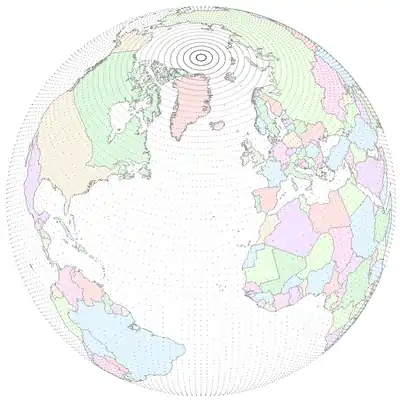Gaussian grid
A Gaussian grid is used in the earth sciences as a gridded horizontal coordinate system for scientific modeling on a sphere (i.e., the approximate shape of the Earth). The grid is rectangular, with a set number of orthogonal coordinates (usually latitude and longitude).

At a given latitude (or parallel), the gridpoints are equally spaced. On the contrary along a longitude (or meridian) the gridpoints are unequally spaced. The spacing between grid points is defined by Gaussian quadrature. By contrast, in the "normal" geographic latitude-longitude grid, gridpoints are equally spaced along both latitudes and longitudes. Gaussian grids also have no grid points at the poles.
In a regular Gaussian grid, the number of gridpoints along the longitudes is constant, usually double the number along the latitudes. In a reduced (or thinned) Gaussian grid, the number of gridpoints in the rows decreases towards the poles, which keeps the gridpoint separation approximately constant across the sphere.
Examples of Gaussian grids
- CCCma global climate models of climate change
- [96×48]
- [128×64]
- European Centre for Medium-Range Weather Forecasts
- 192×96
- 320×160
- 512×256
- 640×320
- 800×400
- 1024×512
- 1600×800
- 2048×1024
- 2560×1280
- Features for ERA-40 grids
References
- NCAR Command Language documentation
- W.M. Washington and C.L. Parkinson, 2005. An Introduction to Three-Dimensional Climate Modeling. Sausalito, CA, University Science Books. 368 pp.
- Hortal, Mariano, and A. J. Simmons, 1991. Use of reduced Gaussian grids in spectral models. Monthly Weather Review 119.4 : 1057-1074.